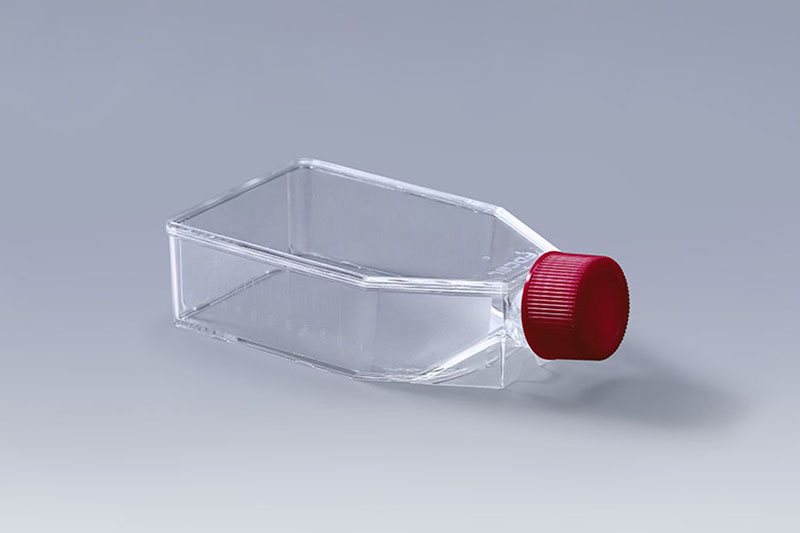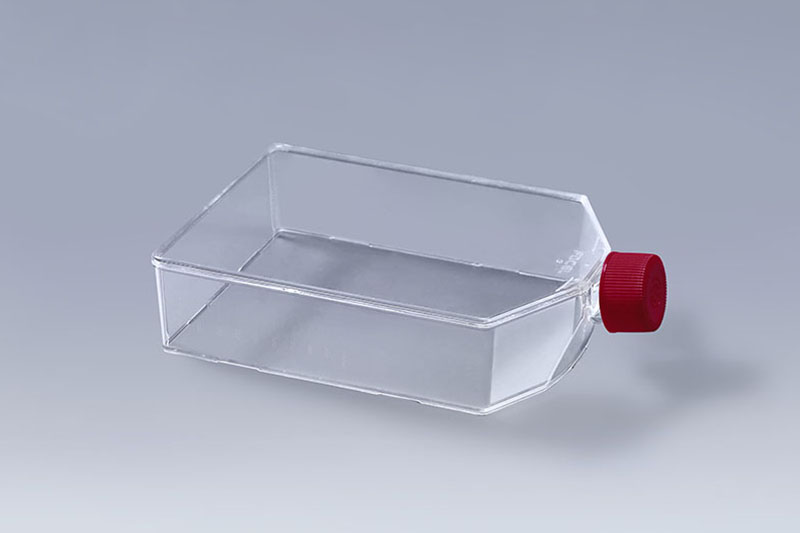When using cell culture consumables such as cell culture flasks for cell culture, there are 7 common types of pollution, so what kind of pollution are they, and what are their characteristics? Let me give you a brief introduction:
1. Bacterial contamination: Bacteria are black and sandy under an ordinary inverted microscope. Depending on the infected bacteria, they can have different shapes. The culture medium will generally become turbid and yellow, which will have a significant impact on cell growth.
2. Mycoplasma pollution: black, it seems to be mostly polymorphic, the culture medium is generally turbid, the culture medium is usually infected by the mycoplasma, many domestic sera have not been tested negative for mycoplasma, and mycoplasma is one of the most common microorganisms in bovine serum .And it cannot be removed by filtration. After the mycoplasma infects the cells, the cell changes are not obvious, but they die slowly.
3. Black colloid insect pollution: it can penetrate the filter membrane, and can also spread through the air. Under low magnification, it will be black dots, and under high magnification, black worms can be seen swimming around. The cells are still usable. Usually, the cells are in good growth state, and there is no obvious increase in the number of animals observed, and there is no obvious change in the color and transparency of the culture medium. Similar phenomena can be found in the same batch of serum-raised cells. It will not have a significant impact on the growth status of the cells, and it will disappear naturally after the cells proliferate vigorously, and no special treatment is required except for changing the serum.
4. Fungal pollution: Generally, the culture medium is clear and does not change color, and there are filaments under the microscope. Some fungi start to look like dead cell fragments, but their many, many small pieces are very clear, like coral, not indistinguishable from cell fragments. , will slowly grow very thin black filaments. Fungi grow slowly and are not as easy to be found as bacteria, but once they are found, the cells will be polluted and it is difficult to revive.
The above is to introduce to you the four common types of pollution when using cell culture flasks for cell culture. I hope it can help you. The remaining three will be introduced in the next article.
The FAI climbed 5.9 percent year-on-year in the first 11 months of 2018, quickening from the 5.7-percent growth in Jan-Oct, the National Bureau of Statistics (NBS) said Friday in an online statement.
The key indicator of investment, dubbed a major growth driver, hit the bottom in August and has since started to rebound steadily.
In the face of emerging economic challenges home and abroad, China has stepped up efforts to stabilize investment, in particular rolling out measures to motivate private investors and channel funds into infrastructure.
Friday's data showed private investment, accounting for more than 60 percent of the total FAI, expanded by a brisk 8.7 percent.
NBS spokesperson Mao Shengyong said funds into weak economic links registered rapid increases as investment in environmental protection and agriculture jumped 42 percent and 12.5 percent respectively, much faster than the average.
In breakdown, investment in high-tech and equipment manufacturing remained vigorous with 16.1-percent and 11.6-percent increases respectively in the first 11 months. Infrastructure investment gained 3.7 percent, staying flat. Investment in property development rose 9.7 percent, also unchanged.
 English
English



















































 T75 Cell Culture Flasks
T75 Cell Culture Flasks T225 Cell Culture Flasks
T225 Cell Culture Flasks